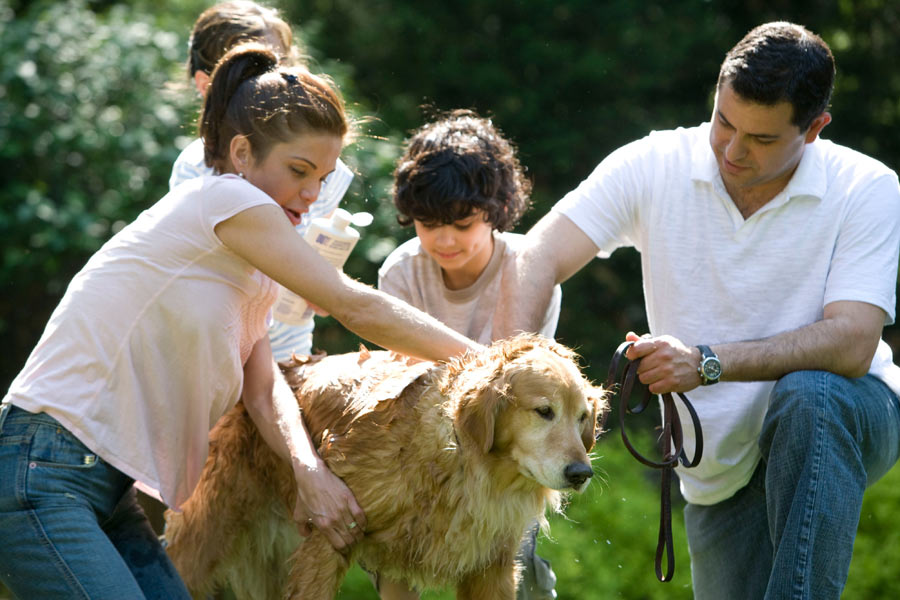Pet insurance has leap-frogged pet sitting and grooming services, making it a popular purchase for pet owners.
Petinsurance has been around for more than a hundred years. In fact, the first recorded pet insurance took place in 1924. It was written for a dog in Sweden!
However, over the last three years, there’s been a dramatic increase in the number of people taking out insurance for their pets.
According to Pets in Australia: A National Survey of Pets and People, 2019, expenditure on pet health insurance has grown by $0.2 billion since its 2016 survey.
The authors note that a large proportion of the increase in on-going pet expenditure since 2016 has been ‘driven by a reported uptick in spending on vet fees and pet insurance premiums. (Which has off-set a reported decline in expenditure on food, and a flat-lining in healthcare products.)
The survey reveals pet insurance has ‘leap-frogged both minding and grooming services over the past three years to become the fifth-largest category.’
Champions of pet health
According to the survey, ‘Australians are now investing an estimated $2.6 billion a year – more than ever – on the health of their pets. Expenditure at veterinary clinics has risen by 19% in the past three years, which equates to $414 million.
Indeed, vet services account for the second-largest category of continuing pet expenditure (a close second after pet food costs). According to the survey, 84% of dog owners and 68% of cat owners visited a vet in the past year. The average vet spend was $546 for dog owners and $371 for cat owners.
The most common reason why pet parents are taking a trip to the vet includes illness or injury (24%), dentistry (10%), surgery (6%) and vaccinations (56%).
Additionally, owners are not only taking their pets to the vet when they are sick; an increasing number of people rely on the vet for preventative advice.
Why the rise in pet health insurance?
In 2016, pet insurance was the seventh-largest category of pet expenditure. Over the last three years, it has risen to become the fifth-largest category.
The 2019 survey results show that Aussie pet owners are now spending almost $745 million on pet health insurance. That’s a 56% increase in three years! So what has caused this leap?
Well, there’s no denying people increasingly regard their pets as beloved family members — hence the term fur babies! What’s more, pet owners are increasingly adopting ‘pet parenting’ behaviours, which see them treating their pets like children. This includes talking to their pets in the same way they might speak to a small child and giving their pet a ‘human’ name.
When a pet owner views their furry friend as a member of the family, they are more likely to want to plan for medical expenses. As well as fork out to support their pet’s wellbeing and spend more on medical procedures to prolong their pet’s life.
Aside from the ‘humanisation’ of pets, our fur babies are also living longer (just like people). This could mean the need for ongoing pet pharmaceuticals or increased risk of injury due to vision impairment, fragility or poor mobility.
Pet industry forecasts suggest veterinary clinics are likely to increasingly offer medical procedures and services previously reserved for humans. Of course, these things come with a price tag — which might go some way towards explaining the increase in uptake of pet health insurance.
What you need to know about pet health insurance
Whether you have pet insurance or not, here are a couple of facts to consider:
- The average yearly pet health insurance premium is $525 for dog owners and $358 for cat owners.
- On average dog owners spend $546 on a trip to the vet, while the average vet spend for cat owners is $371.
- Dog and cat owners who visit the vet are going multiple times a year – averaging 2.1 visits per dog and 1.7 per cat.
- According to Choice.com.au more than half of cat and dog owners are prepared to pay up to $2,500 for treatment if their pet is diagnosed with a life-threatening illness.
- However, most pet owners (66%) would have to either take out a loan or use their credit card to pay for their pet’s treatment, due to not having pet insurance.
Certainly, the coronavirus pandemic may have put the brakes on many potential purchases, but it’s likely that post-COVID we will see a continuing rise in the number of people taking out pet health insurance.
Here are a few important things to consider when choosing a pet health insurance policy and provider.
- Familiarise yourself with the different policies and different levels of cover
- Consider what sort of cover you might require
- Compare the features of each policy with the different prices
- Check the exclusions. For example, pre-existing conditions are generally not covered even for plans with illness coverage
- Take a look at the optional extras. For example, some policies offer preventative treatments such as teeth cleaning to help avoid potential issues down the track
- Check the benefit limit (this is the maximum total amount the insurance company will pay out per year)
- Know what excess you will be expected to pay
- Read past and present customer reviews
If you enjoyed reading this post, you might be interested in these related articles:
Guide to pet insurance in Australia
Information sources:
Animal Medicines Australia. Pets in Australia: A National Survey of Pets and People, 2019.
Image source: Unsplash








Leave A Comment